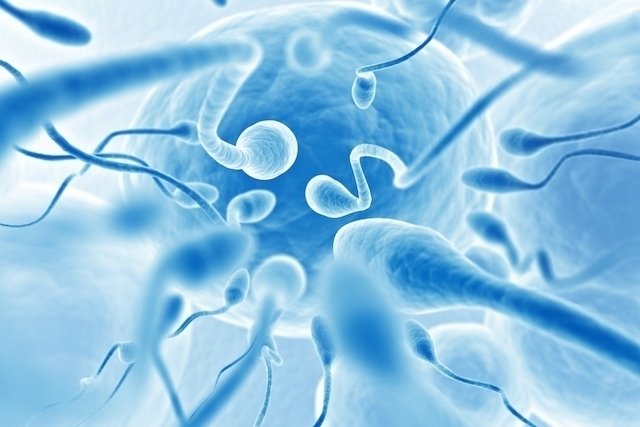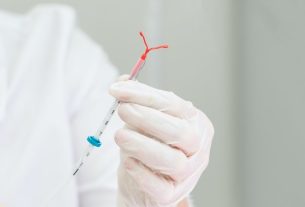Retrograde ejaculation is when sperm goes into the bladder, instead of out through the urethra, causing a reduction or absence of sperm during orgasm.
Although retrograde ejaculation does not cause any pain, nor is it dangerous to health, it can have emotional implications, as the man feels that he cannot ejaculate, as expected. Furthermore, in cases where there is a total absence of ejaculation, infertility may occur.
Whenever there are changes in ejaculation, it is very important to go to the urologist to carry out an assessment, identify the problem and start the most appropriate treatment.

Possible symptoms
The main signs and symptoms of retrograde ejaculation are:
- Reduction or absence of sperm during ejaculation;
- Cloudy or slightly whitish urine;
- Difficulty getting your partner pregnant.
Retrograde ejaculation does not cause pain. Men with retrograde ejaculation are also able to reach and feel orgasm, as well as have a satisfactory erection.
How to confirm the diagnosis
Retrograde ejaculation can be diagnosed through a urine test, carried out after an orgasm, in which the presence of sperm in the urine confirms the existence of the problem. Despite having a simple diagnosis, retrograde ejaculation must first be identified by the man, who in these cases observes a reduction or complete absence of sperm during climax.
Causes of retrograde ejaculation
At the entrance to the bladder there is a small sphincter that closes during orgasm, allowing the semen to take its normal course, being expelled through the urethra and the opening of the penis.
However, when this sphincter is not working correctly, it can end up opening and, as a result, sperm can enter the bladder, not following its normal route. Some causes that can cause this change in the sphincter include:
- Injuries to the muscles around the bladdercaused during prostate or bladder surgery;
- Diseases that affect nerve endingssuch as multiple sclerosis or uncontrolled chronic diabetes;
- Medication side effectsespecially those used to treat psychological disorders such as depression or psychosis.
Depending on the cause, treatment for retrograde ejaculation can be more or less complicated and, therefore, it is very important to consult a urologist.
How the treatment is carried out
Treatment of retrograde ejaculation is usually only necessary when it interferes with a man’s fertility. In these cases, the main treatment options include:
1. Medicines
The most commonly used medications include Imipramine, Midodrine, Chlorpheniramine, Bronpheniramine, Ephedrine, Pseudoephedrine or Phenylephrine. These are some medication options that regulate the functioning of the nerves in the pelvic region and, therefore, are used when there is degradation of the pelvic nerves, as can happen in cases of diabetes or multiple sclerosis.
These remedies may not have the expected effect on injuries caused by surgery, as this will depend on the level of the injury.
2. Infertility treatments
These types of treatments are used when a man wants to have children, but has not obtained results with the medicines recommended by the doctor. Therefore, the urologist may recommend sperm collection or the use of assisted reproduction techniques, such as Intra Uterine Insemination, where a small portion of sperm is inserted into the woman’s uterus, for example.
See other ways to treat and deal with male infertility.
3. Psychological support
Psychological support is very important for all men, regardless of the type of treatment they are undergoing. This is because the absence of effective ejaculation can greatly reduce a man’s emotional and physical satisfaction, which ends up generating stress.
The problem of retrograde ejaculation can be a bigger problem in couples who are trying to get pregnant and, therefore, psychological and emotional support is very important.
Bibliography
- HARVARD HEALTH PUBLISHING. Retrograde Ejaculation. Available at: <https://www.health.harvard.edu/a_to_z/retrograde-ejaculation-a-to-z>. Accessed on April 16, 2019
- MAYO CLINIC. Retrograde ejaculation. Available at: <https://www.mayoclinic.org/diseases-conditions/retrograde-ejaculation/diagnosis-treatment/drc-20354896>. Accessed on April 16, 2019
- JEFFERYS, Amanda et al. The management of retrograde ejaculation: a systematic review and update. Fertility and Sterility. Vol.97. 306-311, 2012

Sign up for our newsletter and stay up to date with exclusive news
that can transform your routine!
Warning: Undefined array key "title" in /home/storelat/public_html/wp-content/plugins/link-whisper-premium/templates/frontend/related-posts.php on line 12
Warning: Undefined array key "title_tag" in /home/storelat/public_html/wp-content/plugins/link-whisper-premium/templates/frontend/related-posts.php on line 13



